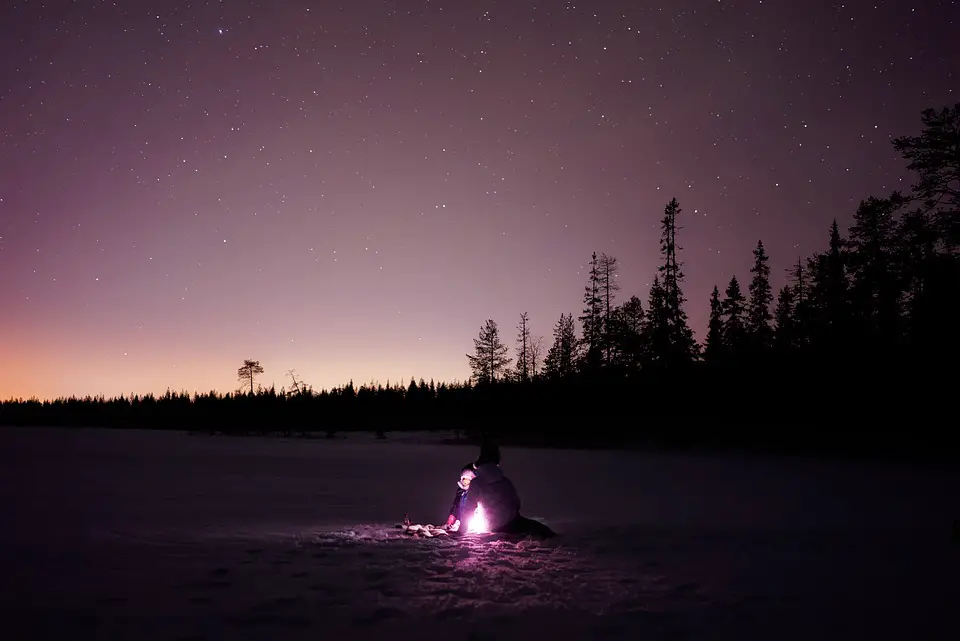Table of Contents
Introduction
Do you crave a more immersive and adventurous camping experience? Are overcrowded campsites and designated camping areas stifling your desire to truly connect with nature? If so, wild camping may be the perfect solution for you.
In this article, we will delve into the world of wild camping, exploring what it is, why people choose it, and how to engage in this thrilling form of outdoor exploration. Get ready to break free from the constraints of traditional campsites and dive into the untouched beauty of the wilderness.
What is Wild Camping?
Wild camping, also known as stealth camping or free camping, involves setting up camp in wilderness areas away from established campsites or designated camping areas. It allows you to immerse yourself fully in nature by spending nights under the stars and waking up to breathtaking panoramic views.
Unlike traditional camping, wild camping offers a sense of solitude, freedom, and raw connection with nature. It is about venturing into the wilderness, finding a serene spot, and setting up camp wherever you please, as long as it is legal and respectful to the environment.
Why Choose Wild Camping?
Wild camping offers a range of benefits that attract outdoor enthusiasts seeking a unique camping experience:
– Escape from Crowds: Unlike campsites, which can often be crowded and noisy, wild camping offers solitude and tranquility, allowing you to truly disconnect from the hustle and bustle of daily life.
– Explore Unspoiled Nature: With wild camping, you have the opportunity to venture deep into untouched landscapes that are far from the beaten path. This allows you to discover hidden gems and experience the true wilderness.
– Flexibility and Freedom: Wild camping lets you follow your own schedule and set up camp wherever you desire (within legal boundaries). There are no reservations or restrictions, providing a sense of freedom and adventure.
– Star Gazing and Sunrise Views: One of the most magical aspects of wild camping is the chance to witness a sky full of stars and breathtaking sunrises. Away from light pollution, you can truly appreciate the wonders of the night sky.
– Affordability: Wild camping is usually free or requires minimal fees, making it a cost-effective way to enjoy the wilderness.
Preparing for a Wild Camping Adventure
To ensure a safe and enjoyable experience, proper preparation is crucial before embarking on a wild camping adventure:
1. Research: Familiarize yourself with the area you plan to camp in, including any laws or regulations related to wild camping. Obtain necessary permits if required.
2. Pack Light: Keep your backpack as lightweight as possible, considering the essential camping gear such as a tent, sleeping bag, cooking equipment, and sufficient food and water.
3. Navigation: Carry a map, compass, or GPS device to help you navigate through the wilderness and avoid getting lost.
4. Safety Gear: Pack essential safety equipment such as a first aid kit, headlamp, whistle, and a means of communication, such as a fully charged cell phone or a satellite phone.
5. Leave No Trace: Adhere to Leave No Trace principles by minimizing your impact on the environment. Properly dispose of waste, avoid damaging vegetation, and respect wildlife habitats.
Top Destinations for Wild Camping
While wild camping opportunities are vast, here are some remarkable destinations around the world worth exploring:
– Scottish Highlands, Scotland: With its rugged landscapes and stunning lochs, the Scottish Highlands offer a true wilderness experience.
– Yosemite National Park, USA: Find secluded spots away from the main campsites to immerse yourself in the breathtaking beauty of this iconic park.
– Lake District National Park, England: With its picturesque lakes and rolling hills, the Lake District provides plenty of hidden corners for wild camping enthusiasts.
– Lapland, Finland: Explore the pristine wilderness of Lapland, where you can camp under the dazzling Northern Lights during winter.
– Tongariro National Park, New Zealand: Embark on a multi-day hike across volcanoes and alpine landscapes, where wild camping is permitted in designated areas.
FAQs
Is wild camping legal?
Wild camping legality varies depending on the country and specific regions within it. It is essential to research and understand the legalities and regulations of an area before engaging in wild camping. For some places, wild camping may be entirely legal, while others may prohibit or limit it.
How do I find suitable camping spots?
Research is key when finding suitable camping spots for wild camping. Look for areas remote from civilization and away from private property. Utilize maps, guidebooks, online resources, and even local knowledge to identify potential camping spots.
What should I do if I encounter wildlife?
When camping in the wilderness, it is not uncommon to encounter wildlife. In such situations, it is important to respect their space and observe from a safe distance. Practice proper food storage techniques to minimize attracting animals, and if necessary, carry bear spray or other deterrents as per the specific wild animal risks in the region.
What about campfires?
While campfires can enhance the wild camping experience, it is essential to check local regulations. In certain areas, open fires may be prohibited due to the risk of wildfires or environmental concerns. If campfires are allowed, ensure you practice proper fire safety and leave no trace of your fire once you depart.
What if I need to go to the bathroom?
Proper waste management is crucial in wild camping to preserve the environment and prevent contamination. Burying human waste at a suitable depth and distance from water sources is typically recommended. Carry a small shovel or trowel for this purpose and follow Leave No Trace guidelines for waste disposal.




